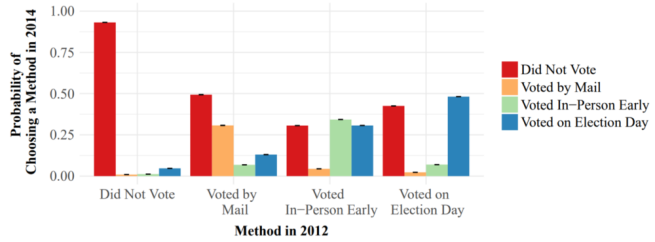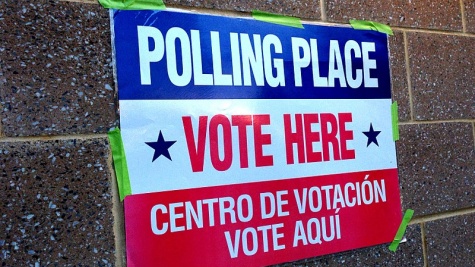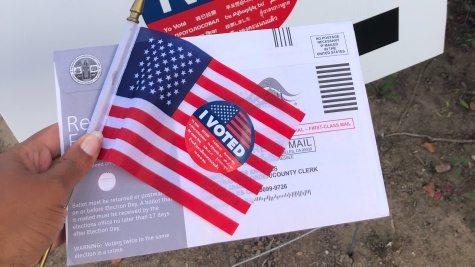Convenience Voting and Electoral Context
Who Votes When — and Why?
The MIT Election Data and Science Lab helps highlight new research and interesting ideas in election science, and is a proud co-sponsor of the Election Sciences, Reform, & Administration Conference (ESRA).
Brian Hamel, Jan Leighley, Marvin McNeese, and Robert Stein recently presented a paper at the 2018 ESRA conference entitled, “Convenience Voting and Electoral Context: Who Votes When and Why?” Here, they summarize their analysis from that paper.
Americans are afforded a wide range of options for when, where, and how they cast their ballots, including in-person on Election Day at neighborhood polling places, in-person before Election Day at designated early voting locations (with locations ranging from churches and schools to supermarkets and car dealerships), or by dropping a ballot in the mail.
Many of these reforms were adopted to increase voter turnout by reducing the inconveniences and costs associated with voting. Scholars have studied how these alternative modes of voting impact the likelihood a person will vote, reporting mixed, but consistently modest, effects on turnout. What has not been studied is why a person chooses one mode of voting over another.
In this paper, we ask that question — when given choices on when, where, and how to cast their ballot, why do voters choose one way of voting over another? First, we assess the common assumption that voters adopt a mode of voting and then habituate to the use of that mode over time. We also examine whether campaign mobilization activities from candidates, parties and interest groups are associated with how and when voters cast their ballots. Documenting whether political campaigns have an influence on why citizens choose one mode over another may help to explain why alternative modes of voting have had only inconsistent and modest — or even negative — effects on levels of voter turnout.
Our Analysis
We test our hypotheses using individuals’ voting histories from the 2010, 2012, 2014 and 2016 elections in Florida and North Carolina, merged with congressional campaign spending data from the Federal Election Commission. From our research, we report two primary findings. First, we find that habituation to one mode of voting over time is not commonly observed. In fact, the probability of a voter choosing the same method as in previous cycles rarely exceeds 50%. Traditionally, voting has been viewed as a habitual activity, up to and including individuals’ choices of which mode to use to cast their vote. In that light, the assumption has been that voters’ use of new (alternative) modes of voting will necessarily increase over time. The evidence we present suggests that these are exaggerations at best, if not simply incorrect.
Second, we find that the behavior of candidates and campaigns (measured through campaign spending in the seven weeks prior to the election) mediates habituation. For example, we find that increased campaign spending also increases the likelihood of voting-by-mail by 5 to 10 percentage points — regardless of the mode of voting in the previous one or two election cycles. That is, campaign spending can drive individuals to vote in ways that they did not use in the previous one or two election cycles.
The particular approach we took — using voter history files to study voter turnout — enhances our confidence in these findings. The use of voter history files to study voter turnout has increased dramatically over the past ten years, and is now considered to be the “best practice” in studying voter turnout. Yet varied ease of access to state voter files means these analyses are often restricted to one state. More importantly, they rely on voter files that are “as of” the date on which they are generated. As a result, analysts using these files that want to document voter behavior in previous cycles will not be able to examine the behavior of the actual voting universe at the time of that election. Voters who have moved or died, for example, but who were active in prior elections, will not be included in the data.
By relying on voter files from more than one state over time, and by using files that capture the voting behavior of registered voters over several election cycles, we overcome some of these challenges. This allows for a more accurate study of the same voter over time as she casts (or does not cast) her ballot in different ways over multiple elections. In short, our work suggests an important role for the political environment, and in particular the behavior of candidates and parties, in shaping the decision of when and where to vote.





